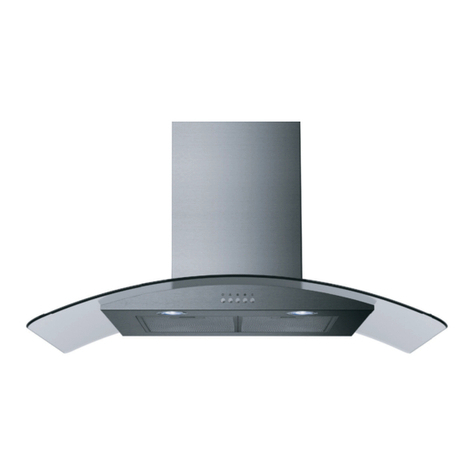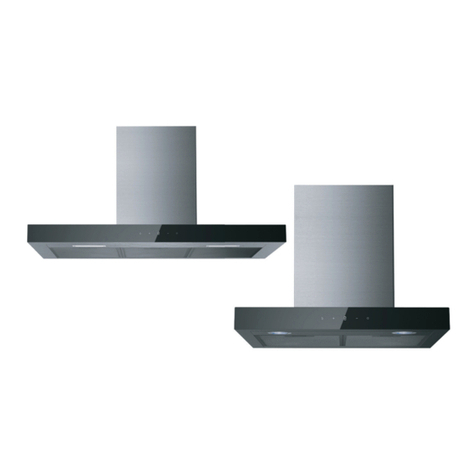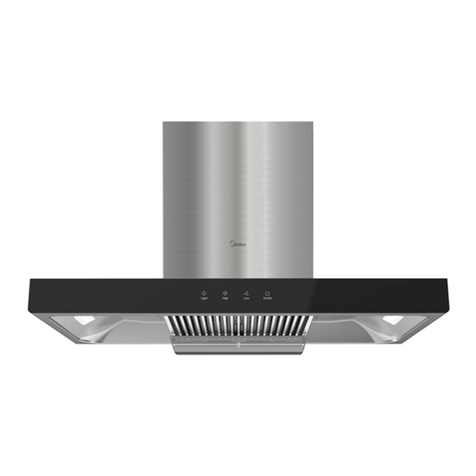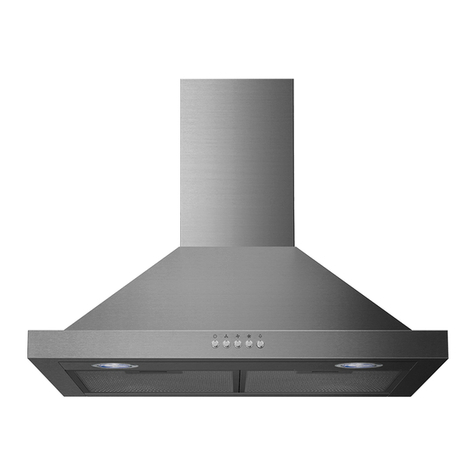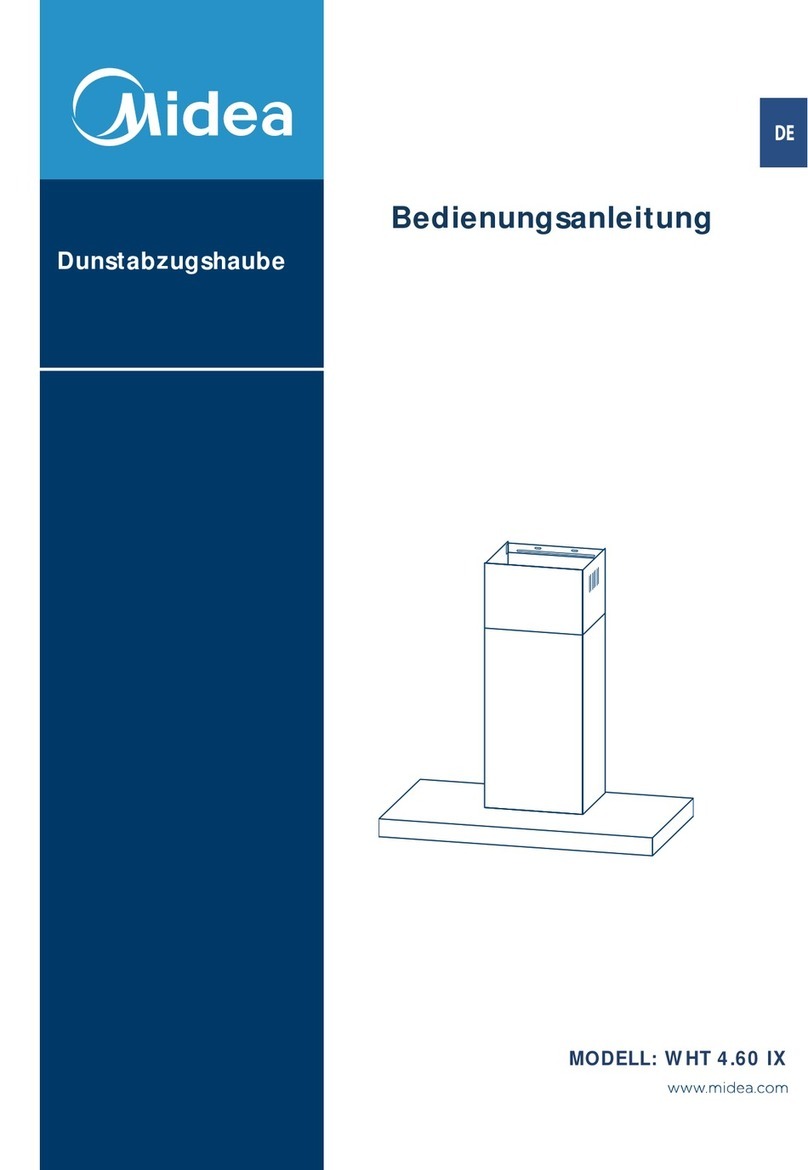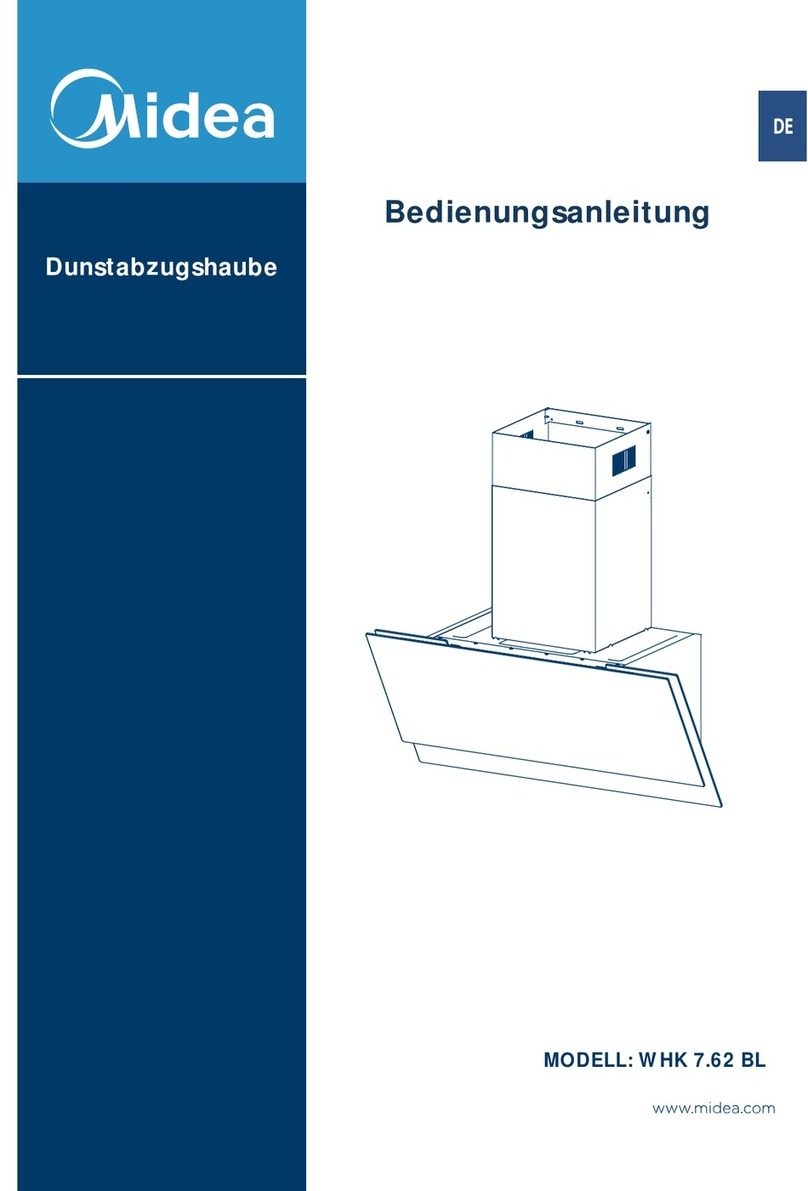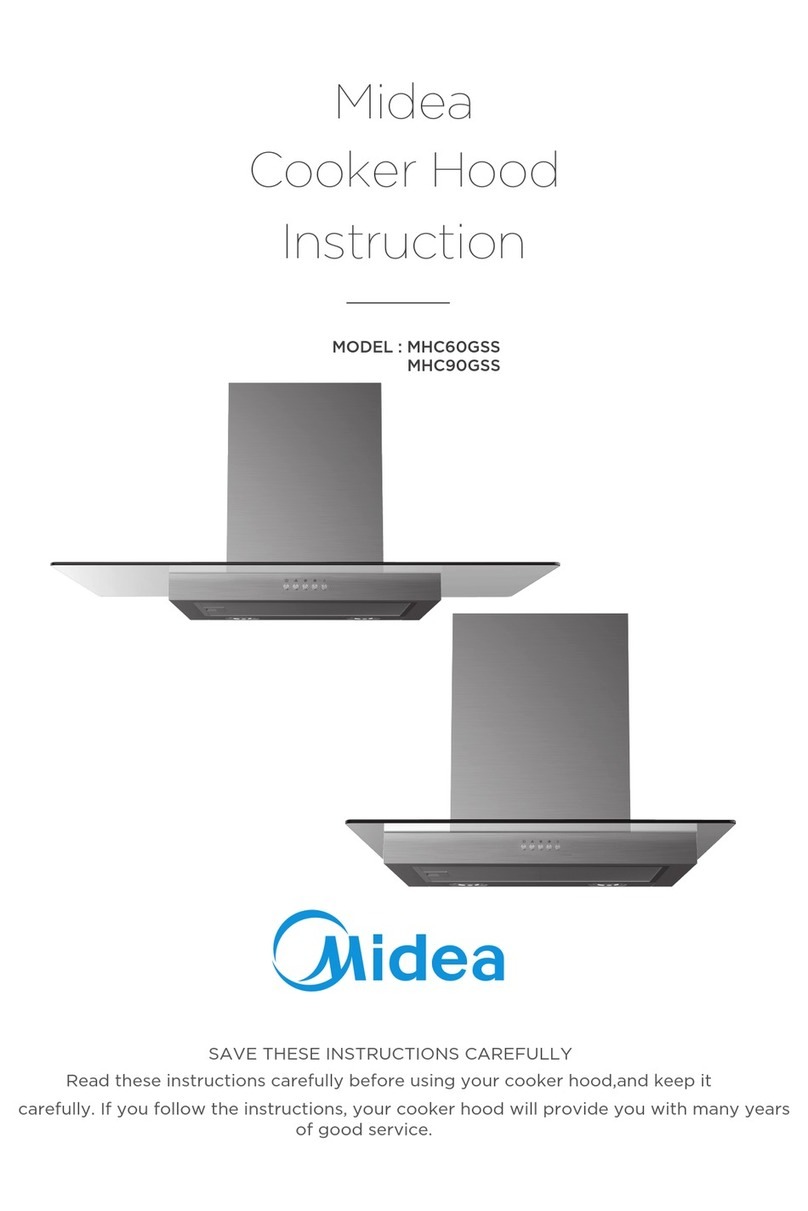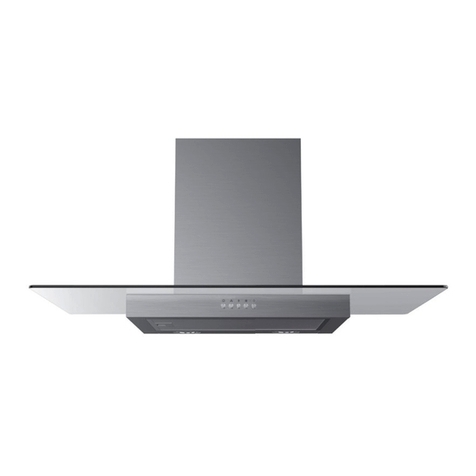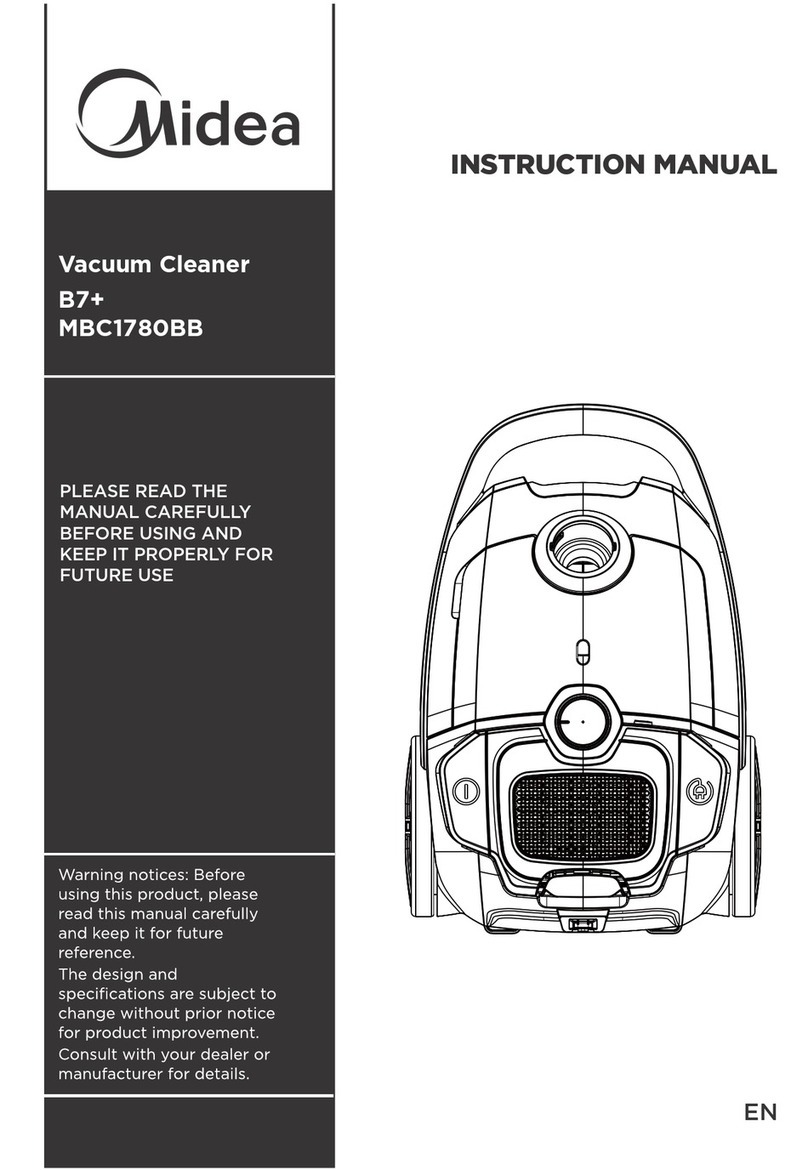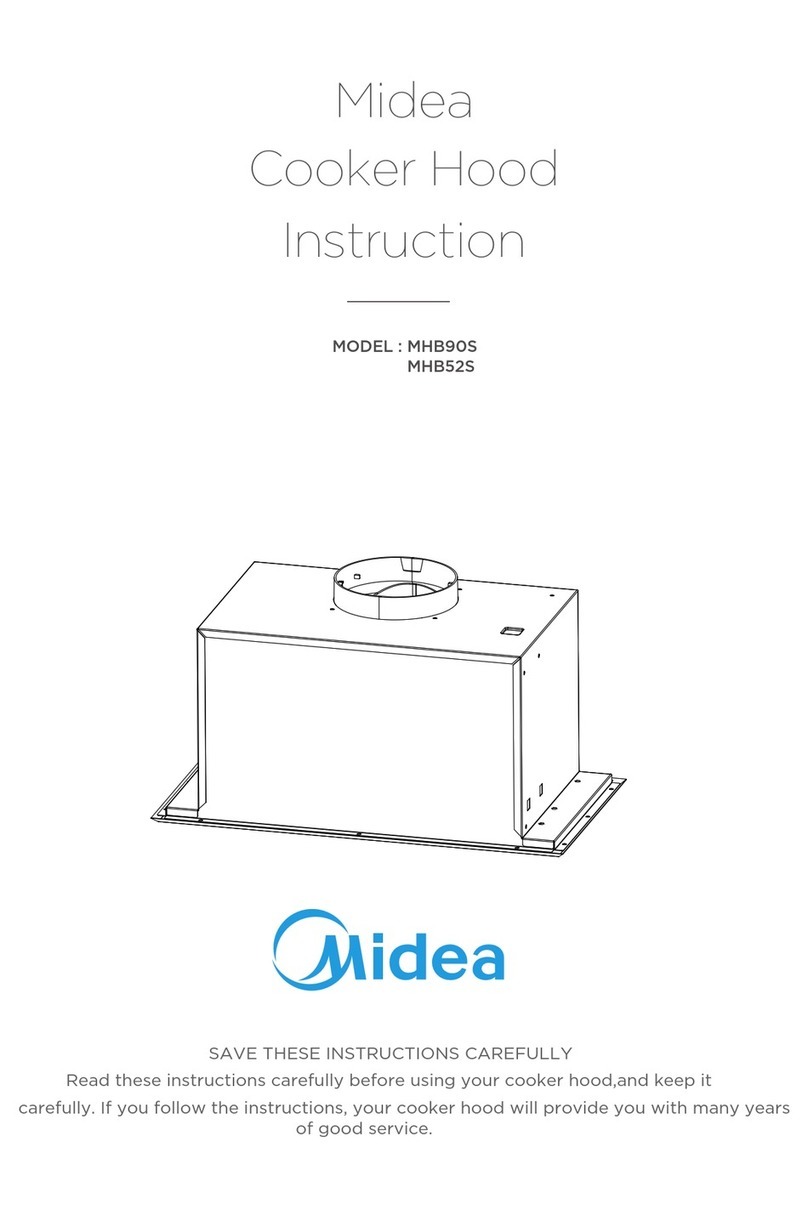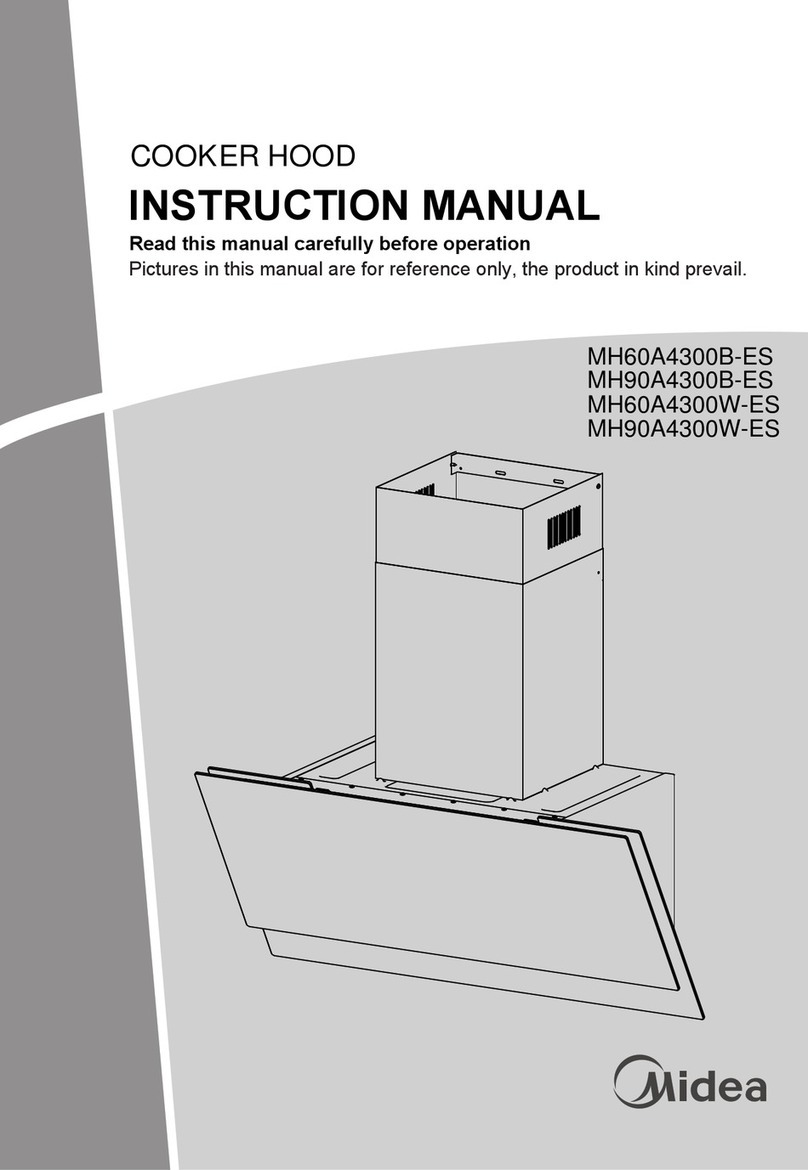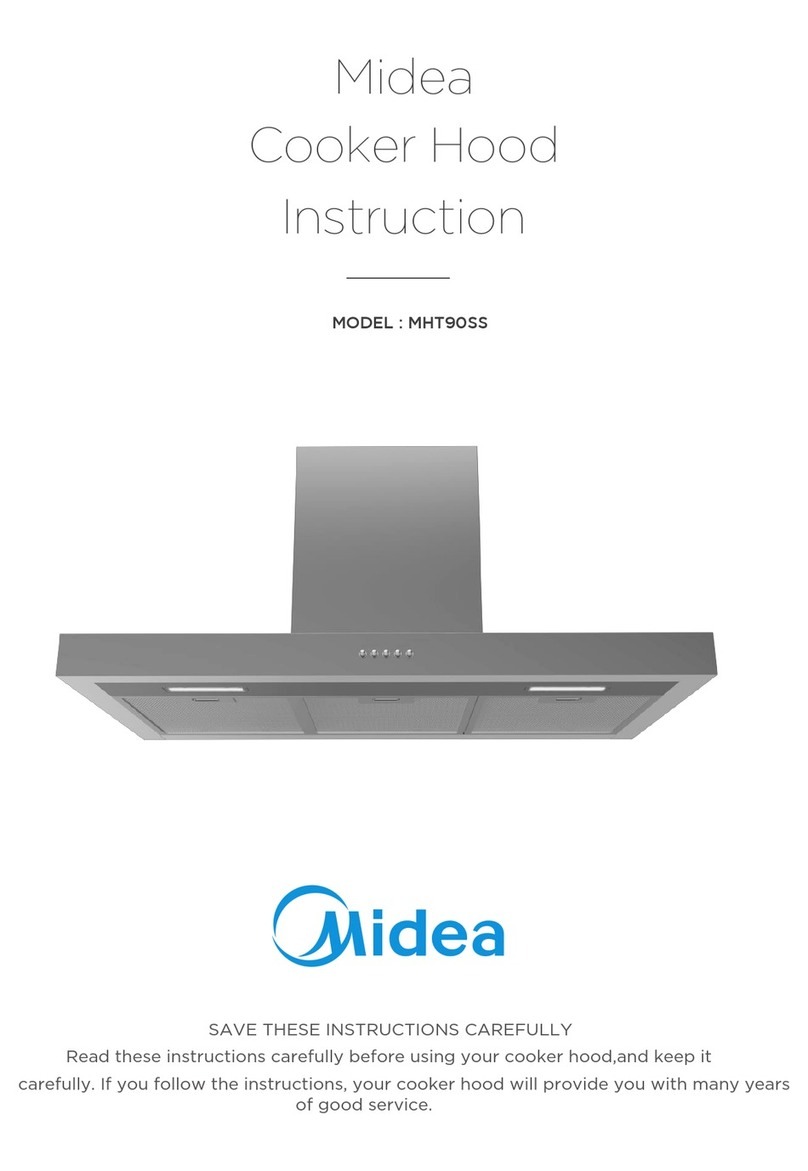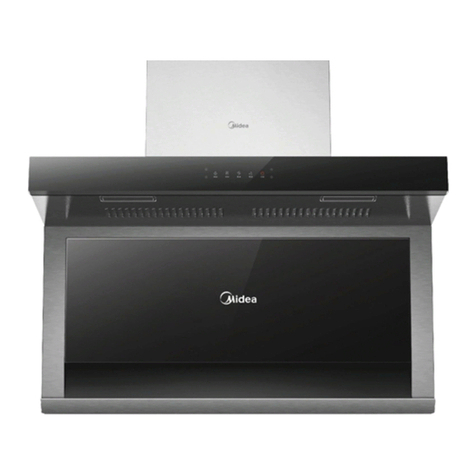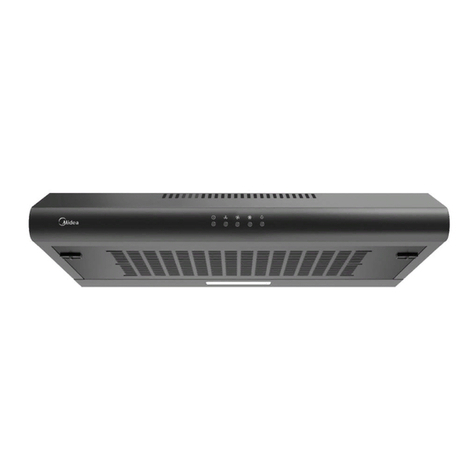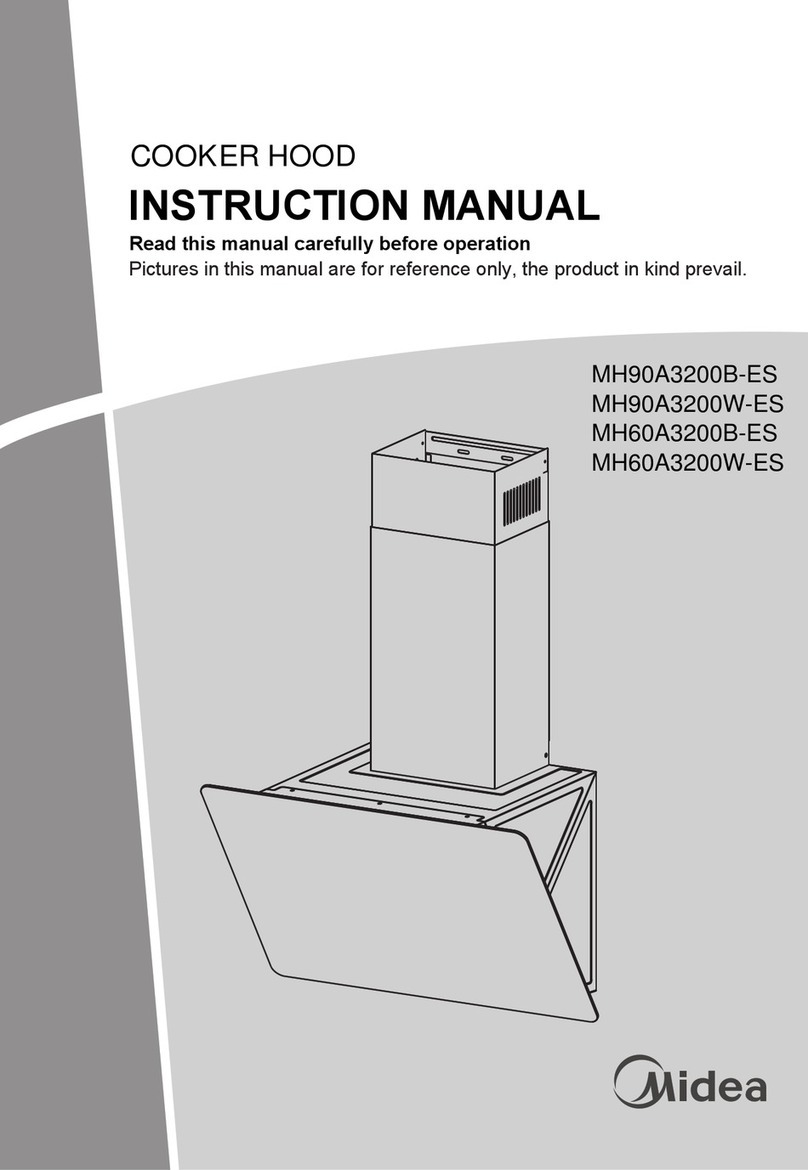
RECOMMENDATIONS AND SUGGESTIONS
The instructions for Use apply to several versions of this appliance. Accordingly, you
may find descriptions of individual features that do not apply to your specific appliance.
INSTALLATION
The manufacturer will not be held liable for any damages resulting from incorrect or
improper installation.
The minimum distance between the supporting surface for the cooking vessels on the
hob and the lowest part of the range hood. ( When the range hood is located above a
gas appliance, this distance shall be at least 65 cm. If the instructions for installation for
the gas hob specify a greater distance, this has to be taken into account. The distance of
65 cm can be reduced for:non-combustible parts of range hoods, and parts operating at
safety extra low voltage,Provided these parts do not give access to live parts if deformed ;)
Check that the mains voltage corresponds to that indicated on the rating plate fixed to
the hood.
For Class I appliances,check that the domestic power supply guarantees adequate earthing.
Connect the extractor to the exhaust flue through a pipe of minimum diameter 120mm.
The route of the flue must be as short as possible.
The air must not be discharged into a flue that is used for exhausting fumes from
appliances burning gas or other fuels.
If the extractor is used in conjunction with non-electrical appliances (e.g. gas burning
appliances),a sufficient degree of aeration must be guaranteed in the room in order to
prevent the backflow of exhaust gas. The kitchen must have an opening communicating
directly with the open air in order to guarantee the entry of clean air.
When the cooker hood is used in conjunction with appliances supplied with energy
other than electric, the negative pressure in the room must not exceed 0,04 mbar to
prevent fumes being drawn back into the room by the cooker hood.
If the supply cord is damaged, it must be replaced by the manufacturer, its service agent
or similarly qualified persons in order to avoid a hazard.
Regulations concerning the discharge of air have to be fulfilled.
USE
The cooker hood is only for home use, not suitable for barbecue, roast shop and other commercial purposes.
Never use the hood for purposes other than for which it has been designed.
Never leave high naked flames under the hood when it is in operation.
Adjust the flame intensity to direct it onto the bottom of the pan only, making sure that
it does not engulf the sides.
Deep fat fryers must be continuously monitored during use: overheated oil can
burst into flames.
Do not flame under the range hood; risk of fire.
This appliance can be used by children aged from 8 years and above and persons
with reduced physical, sensory or mental capabilities or lack of experience and
knowledge if they have been given supervision or instruction concerning use of the
appliance in a safe way and understand the hazards involved.
Children should be supervised to ensure that they do not play with the appliance.
Cleaning and user maintenance shall not be made by children without supervision.
“CAUTION: Accessible parts may become hot when used with cooking appliances”.
MAINTENANCE
The cooker hood and its filter should be cleaned regularly according to the instruction.
Switch off or unplug the appliance from the mains supply before carrying out any
maintenance work.
Clean and/or repace the Filters after the specified period(Fire hazard).
Clean the hood using a damp cloth and a neutral liquid detergent.
The appliance uses 4 hob elements at most.
The symbol is packaging indicates that this product may not be treated as household
waste. Instead it shall be handed over to the applicable collection point for the recycling of
electrical and electronic equipment. By ensuring this product is disposed of correctly, you
will help prevent potential negative consequences for the environment and human health,
which could otherwise be caused by inappropriate waste handling of this product. For more
detailed information about recycling of this product, please contact your local city office,
your household waste disposal service or the shop where you purchased the product.
3 4
5678
9 10 11

